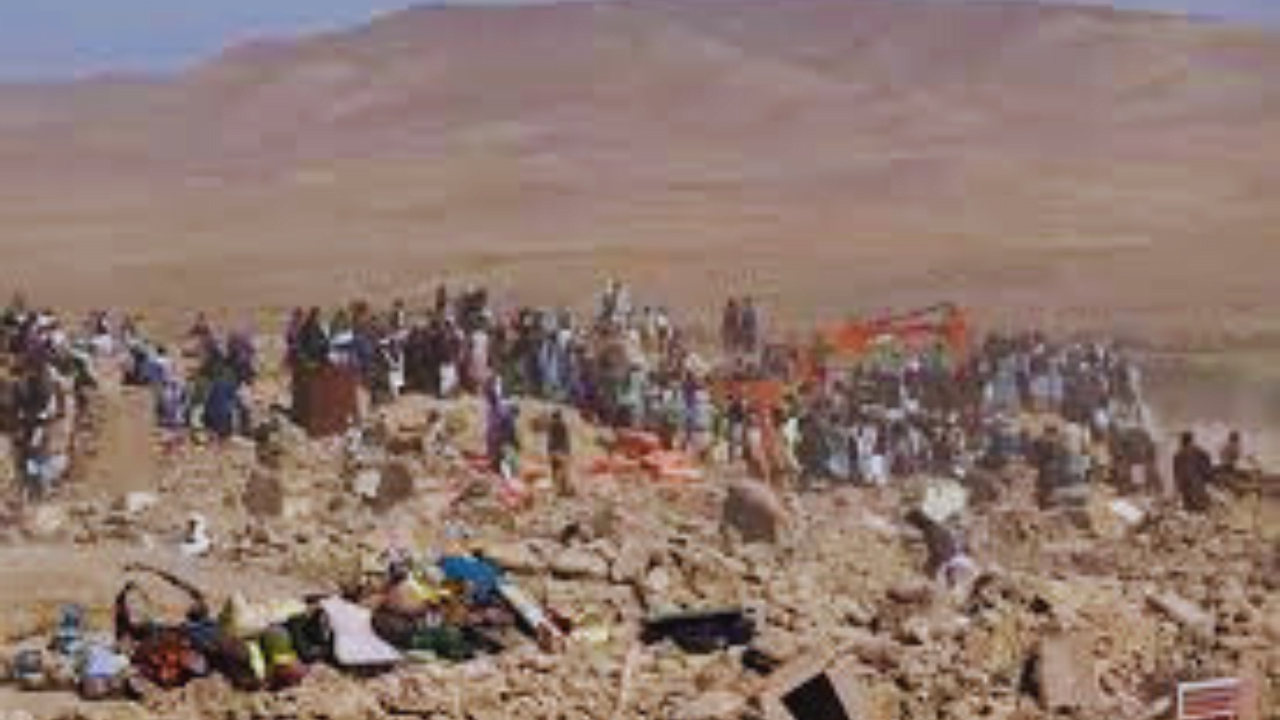Around 30 kilometers (19 miles) north of Herat, the provincial seat, where hundreds were spending their fourth night outdoors, the dawn quake struck.
On Wednesday, an earthquake of magnitude 6.3 rocked western Afghanistan, killing at least one person and terrifying locals who had already been traumatized by a series of tremors that had killed almost 2,000 people over the weekend.
The early morning quake struck around 30 kilometers (19 miles) north of Herat, the province seat, where hundreds were spending their fourth night outside after the quakes on Saturday destroyed their villages.
Abdul Qudos, 32, stated, “It’s terrible; all of Herat is terrified.”
“Our fear is so intense that even when we observe the trees swaying in the wind, we apprehensively mistake it for the onset of another earthquake.”
According to Abdul Zahir Noorzai, ambulance manager at Herat Regional Hospital, the most recent earthquake left at least one person dead and 120 injured.
He told AFP that “the people in these (rural) areas were living outside their homes which are already destroyed” but were being struck by fresh falling debris from unstable ruins.
Although the quake was followed by aftershocks with magnitudes of 5.0 and 4.1, an AFP reporter reported that damage in Herat city, which is home to more than 500,000 people, was limited.
Since the magnitude 6.3 earthquake on Saturday and a string of strong aftershocks, many residents have set up camp in tents, cars, and gardens.
“Our kids are so terrified that they sleep through the night till dawn. They don’t sleep, claims Aziz Ahmad, 40.
Patients at the Herat Regional Hospital were receiving care in a courtyard outside. Wednesday morning saw the arrival of ambulances, but the majority of injuries seemed to be minor.
While Afghanistan has a history of enduring deadly earthquakes, the recent weekend catastrophe stands out as the most devastating to strike the conflict-ridden country in over a quarter of a century.
Casualties still being counted – According to the UN, more than 12,000 people were affected by the previous quakes that completely devastated at least six villages in the rural Zenda Jan district and left volunteers searching for survivors and bodies.
The number of dead and injured has been reported by local and national officials in conflict, however the disaster ministry has reported 2,053 deaths.
The spokesperson for the disaster management ministry, Mullah Janan Sayeq, mentioned, “We are unable to provide precise figures for the deceased and injured, as the situation is continually changing.” The spokesperson for the disaster management ministry, Mullah Janan Sayeq, mentioned, “We are unable to provide precise figures for the deceased and injured, as the situation is continually changing.
For More: News
Large-scale housing provision will be difficult for Afghanistan’s Taliban government, who took control in August 2021 and have strained relations with international humanitarian agencies.
Mohammad Naeem, 40, told AFP that he lost 12 relatives, including his mother, in the earthquakes that occurred on Saturday. “There’s not a dwelling standing, not a solitary room where we could find shelter for the night,” he lamented.
We can no longer reside here. As you can see, our family was martyred at this place. How are we able to live here?
The majority of homes in rural Afghanistan are made of mud and built around wooden support poles; there is little steel or concrete reinforcement; multigenerational extended families typically live under the same roof; as a result, serious earthquakes can devastate communities. Afghanistan is already experiencing a dire humanitarian crisis as a result of the widespread withdrawal of foreign aid following the Taliban’s return to power. Herat province, on the border with Iran, is home to a large number of such homes.
